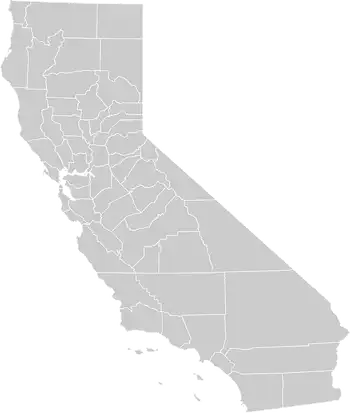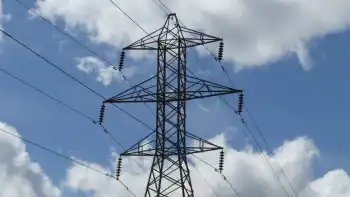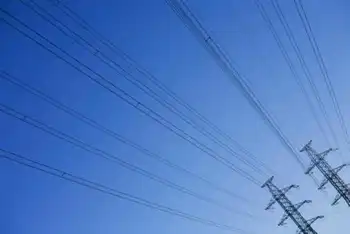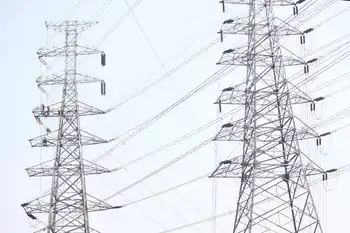Grid undergoes massive transition for renewables
By Scientific American
CSA Z463 Electrical Maintenance
Our customized live online or in‑person group training can be delivered to your staff at your location.

- Live Online
- 6 hours Instructor-led
- Group Training Available
The National Academy of Engineering ranks it as the greatest engineering achievement of the 20th century. What it cannot do is support the massive shift to lowcarbon power that scientists warn will be needed to avoid catastrophic climate change impacts.
To shrink the electricity sectors carbon footprint, experts say, the nation needs to build thousands of miles of new transmission lines over the next 20 years to connect more renewable resources to electricity demand centers. A 21stcentury grid will also have to balance fluctuating power flows from wind and solar generation, smallscale distributed sources, and plugin electric vehicles. And it must be interactive so that customers can manage their electricity use.
The transition is already under way, although it means different things for different companies. Firms that operate longdistance transmission lines, such as the Independent System Operators that manage regional grids in New York, New England and the Midwest, are adding sensors, phasors, and other devices invisible to nonengineers, that give them much more precise control over the system. Better control will help utilities add more renewable power, a challenge now because wind and solar energy are intermittent sources, and grid operators cant always react quickly when their output fluctuates.
The whole power system is engineered to balance demand and supply at every second, which means that control over generators is really important, said energy consultant Peter FoxPenner, a principal with The Brattle Group and author of Smart Power: Climate Change, the Smart Grid, and the Future of Electric Utilities. But if you have really uptodate information on all the flows on your grid, you can tolerate a little more variability. The smart grid will monitor everything at a very, very fine level of detail and reacts really fast, so operators will have time to fire up another plant if wind speed drops or a big cloud formation reduces solar output.
Suppliers such as utilities that deliver power directly to homes and businesses are focusing on a more visible element of the smart grid: meters. Today the grid transmits information one way — from utility to customer — and most meters only show power usage for the current billing period. Whats more, power companies charge the same rate for every kilowatthour of electricity thats consumed, even though the cost of generating electricity can change dramatically during the day. Since users dont see how much power they are using or how much it costs in real time to generate it, they have little incentive to conserve energy or shift their use to offpeak hours.
To crack this problem retail power suppliers are installing advanced metering systems smart meters and wireless communications systems and databases to support them. Advanced metering lets utilities show customers how much electricity they use at different times of day and how much that power costs. With regulators approval, power companies can also use timebased pricing, charging customers based on the actual cost of power. There are many ways to structure timebased pricing: some suppliers charge more for certain blocks of time when demand is typically high, like weekday afternoons, while others raise prices sharply on selected days when the grid is under heavy stress, as on the hottest days of summer. But all of these programs aim to shift consumption away from highdemand periods.
Baltimore Gas and Electric Co. expects to reduce peak demand by 2014 by about 1,500 megawatts, or more than 20 percent of total peak load. Thats the equivalent of a new nuclear power plant, at a fraction of the cost of building new generation, said Mark Case, senior vice president for strategy and regulatory affairs for the utility, which is preparing to deploy two million smart meters and other energy management devices across its central Maryland territory over the next four years and initiate timebased pricing.
Last fall BGE received $200 million in stimulus funds from the Obama administration, part of $4.3 billion in national smart grid stimulus grants. The company expects to spend about $500 million in total on the program and projects that it will save BGE customers more than $2.6 billion.
The main reason for peak shifting is economic, FoxPenner said: It reduces the utilitys cost to provide power at highdemand times. But peak shifting can also reduce carbon emissions, although the climate impact depends on what kind of plants utilities would otherwise call into service to meet peak demand. BGEs peak reductions, for instance, will reduce the need to call on old and relatively dirty coal plants, eliminating significant carbon emissions, Case said.
The bigger climate payoff from smart metering comes as customers reduce electricity consumption throughout the year. Studies in the U.S., Canada and Australia have shown that providing realtime information about electricity use and costs can reduce energy use, although some customers are more receptive than others to smart metering and timebased pricing.
Manufacturers are designing smart thermostats and appliances that will adjust power use automatically in response to price signals from smart meters, an approach known as prices to devices. General Electric is already marketing hot water heaters that can link to smart meters. Whirlpool plans to manufacture one million smart clothes dryers by 2011, and has pledged that by 2015 all of its electronically controlled appliances will be smart gridcompatible worldwide.
Although utilities are running smart grid pilot projects across the U.S., including cities in New York, Texas, Florida, Colorado, and California, recent polls show that only about 20 to 30 percent of Americans know what the smart grid is. But large majorities of those who have heard about it think that seeing data on their power usage will help them save energy. Bearing out those views, studies show that consumers who have realtime information about their energy use reduce their total consumption by about five percent on average.
When customers get enough data about how their electricity use affects their bill, they get interested, said Ellen Vancko, a senior advisor with the Union of Concerned Scientists who has also worked in the electric power industry. You can see it with other purchases — people will drive past three service stations to buy gas from one that charges a cent less per gallon, because they can see the prices. The more information customers get and the more ability they have to act on it, the more successful smart metering programs will be.
As electric vehicles start to penetrate the market, smart metering will also help utilities manage growing power requirements to charge cars at homes and workplaces. A single vehicle charging at 220 volts can double a households peak power usage, so it will be critical to make sure they dont all plug into the grid at 6 p.m., said Case. That will become part of home energy management packages, and we also will probably be able to interrupt charging if its needed to make sure that the grid is operating reliably.
In January the Energy Departments Pacific Northwest National Laboratory released a study estimating that developing a fullscale smart grid in the U.S. by 2030 could reduce annual carbon emissions from the electric power sector by some 442 million metric tons, about 12 percent, equivalent to the output from 66 average coalfired power plants. The smart grid would reduce emissions in many ways, including linking in more renewable power sources and educating consumers about their own energy use. Partial deployment of a smart grid in some areas would yield proportionally smaller payoffs.
Some interest groups are less enthusiastic, especially advocates for lowincome and elderly consumers, who worry that advanced metering will make it easier to cut off customers electricity and that managing home energy use will be too difficult for their members. For example, the American Association of Retired Persons argues that ratepayers should be able to choose whether to shift to dynamic pricing, and that retirees, the ill and the disabled may not be able to move their energy use to offpeak periods.
Unaffordable home energy poses a serious and increasing threat to the health and wellbeing of a growing number of older people in low and moderateincome households. For many of these households, high and volatile home energy prices jeopardize the use of home heating and cooling and increase the prospect of exposure to temperatures that are too hot in summer and too cold in winter, said Dean Sagar, AARPs director of livable communities.
Smart grid advocates say that carefully designed pilot programs and extensive testing — backed by strong oversight from public utility commissions — can minimize negative impacts like these. Moreover, they argue, utilities have no choice: without a more sophisticated grid that can integrate lowcarbon sources, the power industry will not be able to meet state renewable energy targets which mandate a fivefold increase in renewable electricity use by 2030 or accommodate large numbers of electric vehicles.
The smart grid is coming, inevitably, said FoxPenner. The only question is how bumpy the transition will be.











